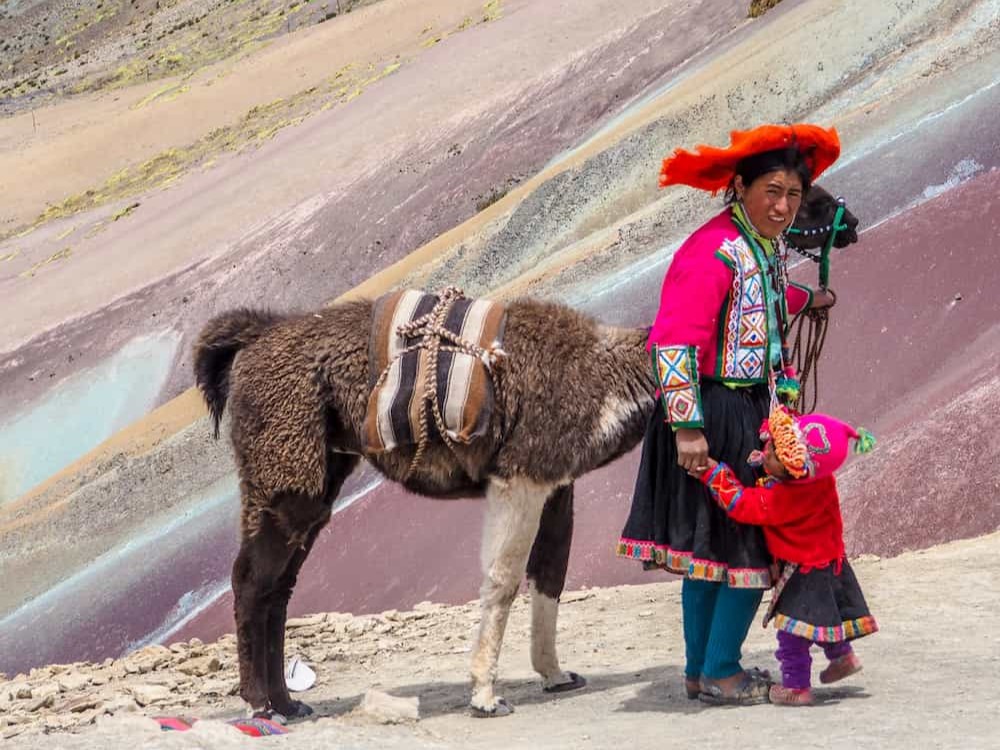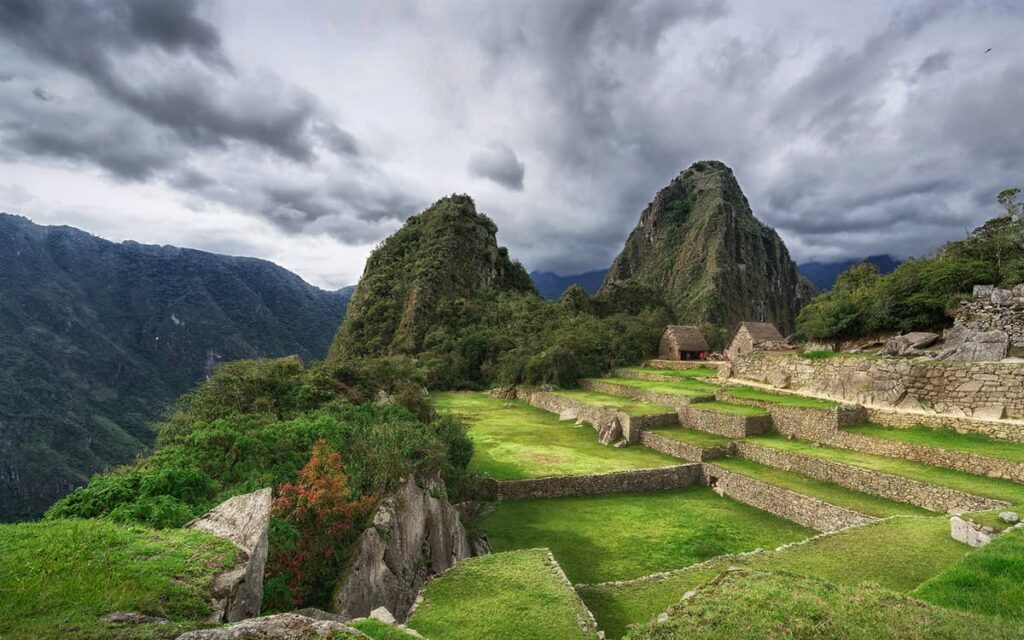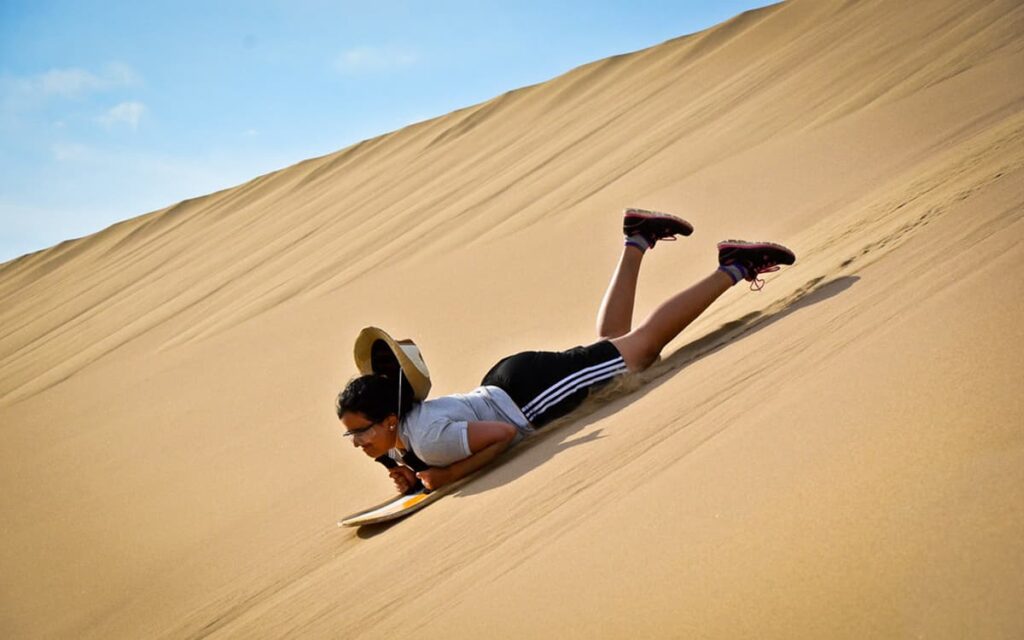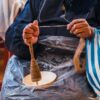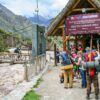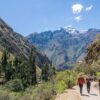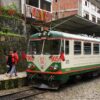Located in the Cusco province of Urubamba, in Peru, the Historic Sanctuary of Machu Picchu is one of the 7 Wonders of the Modern World. Its dazzling Inca complexes, archaeological sites and monuments of high historical-cultural value, have led it to be recognized and admired throughout the world.
The Historic Sanctuary of Machu Picchu is also a protected natural area, which in addition to housing an important historical legacy, protects an extraordinary biodiversity. In its more than 30 thousand hectares, with wooded areas, steep mountains, peaks and snow-capped mountains, it is the habitat of a great variety of species of animals and plants.
The Sanctuary of Machu Picchu not only houses a great archaeological complex but is also the habitat of an impressive amount of natural species of flora and fauna, some in danger of extinction; such as, the spectacled bear and various native plants.
For sure, you already knew that Machu Picchu was chosen one of the new Seven Wonders of the Modern World in 2007, but perhaps you did not know that it was chosen as the Best Green Destination in the World awarded by the Word Travel Awards (WTA) in 2012 With the best records since in 1983, Unesco declared it a Natural and Cultural Heritage of Humanity. Pablo Neruda, in 1943, described the wonder before his eyes; an empire that built a city of stone in the Peruvian Andes.
History:
The citadel of Machu Picchu was rediscovered in 1911 by the North American explorer Hiram Bingham, but it was not until the early 70s when the number of visitors began to increase and with this the first signs of deterioration began to be appreciated, due to mainly to human activity. It is for this reason that on January 8, 1981, the Government of Peru through Supreme Decree No. 001-81-AG, announced the creation of the Historic Sanctuary of Machu Picchu.
The Machu Picchu conservation area was declared in 2012 as the best Green Destination by the WTA (Word travel awards), in recognition of its biodiversity and its millenary cultural heritage.
Location:
The natural conservation area of ??Machu Picchu or Historic Sanctuary of Machu Picchu is located between the Cusichaka and Aobamba rivers to the north and south respectively, which are part of the network of small rivers and streams that feed the powerful Urubamba river, with the Cordillera del Urubamba on the east side and the Cordillera de Vilcabamba on the west side. Viewed from the perspective of a bird in flight, it resembles an open book.
Geography:
The Andes mountain range crosses the western part of the Peruvian territory and in it three mountain ranges can be distinguished: the western mountain range that is closest to the coastline, the eastern mountain range that would be the limit between the jungle and the mountains and the central mountain range, which as its name suggests is located between the two.
The Historic Sanctuary of Machu Picchu is located in the eastern mountain range and among its highest points is the imposing Salkantay mountain (6,271 meters above sea level) and the Nevado Veronica (5,682 meters above sea level). Most of the year, it is from here that the icy water coming from the summits descends abruptly towards the jungle areas located in the lower lands, creating up to 13 altitudinal floors. Each of these floors or ecosystems has its own characteristics of temperature, humidity and soil, which gives rise to different species of plants and animals, making this Sanctuary a place of incredible biodiversity, concentrated in an area of ??only 32,592 hectares.
Did you know?
- Machu Picchu was declared in 1983 Mixed World Heritage (natural and cultural) by Unesco.
- This natural area has a dry and cold climate in the high Andean zone and temperate and humid in the zone of the jungle. The rainy season is from November to March, although temporary fog or rain may occur throughout the year.
Flora and fauna
The Historic Sanctuary of Machu Picchu has more than 32,592 hectares of beautiful landscapes, which are home to the habitats of a huge diversity of wild animals and plants. In addition to containing archaeological remains built in harmony with the landscape.
Known as one of the most diverse ecological places in Peru. In it you can find up to 13 life zones, which makes possible a biodiversity, unique in this part of the world, giving it great environmental value.
In the flora of the place, large extensions of forests of native trees stand out, among which we find the q’euña, intimpa, cedar, alder and pisonay; which create ideal habitats with huge sources of food for the numerous wildlife. With landscapes decorated by a huge number of ornamental plant species such as more than 420 species of orchids (many of them endemic), begonias and more.
In figures
- 423 are the orchid species, registered in the Historic Sanctuary of Machu Picchu.
- 40% of these can be appreciated and extend along the route of the Inca Trail.
- 1% decreases each year, the population of Spectacled Bears in Peru and Machu Picchu.
- 300 are the endemic bird species of the Machu Picchu sanctuary.
- 2012 year in which Machu Picchu was elected the main Green Tourist Destination in the world, for its great variety of flora and fauna.
Machu Picchu Plants
The surprising architecture of Machu Picchu harmonizes with its scenic beauty; the citadel, from the entrance to the seventh wonder is full of diverse Machu Picchu plants and fauna that offers in a visual way the most complex concept of wonder.
In the Inca wonder, in Cusco Airport you will find two botanical gardens, one inside the sanctuary and the other outside it. The first is a few meters from the temple of the three windows and is one of the most important spaces on the site, it has 90 varieties of plants and flowers. In the botanical garden that is outside the citadel, specifically next to the site museum, there are 402 different species of Machu Picchu plants, among them the ones that attract the most attention are the 123 varieties of orchids housed in the place, more in all the sanctuary there are 425 types. In Peru, according to research, there are approximately three thousand species of orchids, which constitutes 10% of the world total.
Orchids:
These flowers have been appreciated since pre-Columbian times for their infinite shapes and their variety of colors. The size range of some plants is so wide that it goes from less than one centimeter, including flowers, to more than seven meters in height. Some orchids have squat and tiny shapes; others, liana type, can reach more than thirty meters in length.
- Masdevallia veitchiana Rchb. F. The queen of the orchids of Machu Picchu. It is so beautiful that it was the origin of an Inca legend: Waqanki. It has an iridescent surface and is of habit Cusco terrestrial airport, strangely epiphyte and develops between 2,100 and 3,310 meters of altitude.
- Odontoglossum praestans Christenson. It is an epiphytic orchid. In Machu Picchu it is found in two life zones: in the humid subtropical jungle and the pre-mountain sub-tropical humid jungle. It blooms profusely and can produce more than ten large flowers in a cluster inflorescence that sprouts from the mature pseudobulbs. The flowers are very fragrant with a scent between jasmine and roses.
- Maxillaria alpestris Lindl. In the Historic Sanctuary of Machu Picchu it has been recorded in life zones from 2,060 to 4,150 meters of altitude, although in other areas of Cusco it has been recorded at lower levels.
- Masdevallia antonii Königer. It presents one of the most spectacular flowers within the genus due to its large size that averages 17 cm high by 10 wide. It blooms in two periods of the year, between April and June and then between October and November.
- Cryptocentrum inaequisepalum C. Schweinf. This beautiful epiphytic and miniature species (8 mm.), Whose name derives from the Greek meaning pointed tongue, is the most widely distributed species of the genus Platystele. It thrives in rainforests and cloud forests with warm to cold temperatures.
Wildlife in Machu Picchu
Among the wildlife that can be found within the limits of the Historic Sanctuary of Machu Picchu is the Spectacled Bear (tremarctos ornatus) also called the Andean bear, which was declared an endangered species due to the gradual and progressive destruction of its natural habitat by the man, through logging, indiscriminate hunting and arson forest fires. This animal can measure between 1.30 and 1.90 meters tall, with whitish spots around the eye sockets, which gives rise to its peculiar name.
Other animals of the wildlife in Machu Picchu are the mountain guan (Penelope obscura), the dwarf deer (Pudu mephistophiles, the river otter (Lutrinae), the Andean fox (Lycalopex culpaeus andinus), the capisos (Nasua nasua), among others.
Another species of wildlife present in the Sanctuary of Machu Picchu is the Gallito de las Rocas (Rupicola peruvianis), a bird characterized by the incredible beauty of its vermilion red plumage, which was declared a national bird of Peru in 1941. This species usually has a size of 30 centimeters, the male specimen of this species being the most striking, with the vermilion red color described above, orange eyes, yellow legs and beak and dark black wings and tail. The female of this species has dark reddish brown plumage. They live in groups consisting of between 20 to 30 individuals. This species was seriously threatened due to hunting and the destruction of its natural habitats, but fortunately in the last decade it has shown an increase and improvement in its population.
Important birds in the sanctuary of Machu Picchu
- Andean condor. Condor de los Andes, or Condor as it is called in South America, is a large bird, being among the largest flying birds of our days. It can fly hundreds of kilometers and stay for hours flying majestically between valleys, or over the slopes looking for dead animals to feed.
- The Torrent Duck. This bird is usually found in pairs or groups of families. It is the only bird in the world that has the ability to dive and swim, it is also found in the fast and crystalline waters of the Urubamba.
- Overcast bird. This is a very cheerful bird, which can be domesticated and has a distinctive flight. It is thought to be an ornamental bird due to its bright yellow color and pleasant singing.
- Green jay. This is an active bird and the one that can be seen in all layers of the jungle. It is opportunistic and omnivorous and may be prying. It is a bird that vocalizes and has a variety of loud sounds. It is impossible not to recognize it due to its blue head, green back and yellow bill.
- Black back thick peak. This bird is very common in the ruins of Machu Picchu and along the Inca Trail and because it is easy to tame it can be seen easily. It is beautiful, and has a delicate singing and is easy to recognize due to its spotted chest and its thick, massive bill.
- Blue and Yellow Tanager. Many Tanagers can be found in the Machu Picchu area, this Tanager is active and eminent due to its yellow and blue colors. It can generally be found on the Inca Trail.
- Giant hummingbird. This is the largest hummingbird in the world! It flies gently, like beating with its wings, slower than other hummingbirds. It is territorial and hunts other species outside the place of its food.
- Green tail. This is a fascinating bird with a short beak and a very long tail! It is active and aggressive and has a flight similar to that of other small hummingbirds, they build beautiful nests.
- Cinnamon fisherman. This is a gentle bird often seen along the roads and railroad to Aguas Calientes – it is eminent because of its rust-red color.
- Masked trogon. This bird can be appreciated along the Inca Trail – it offers us a wonderful sight due to its deep red color and green tail.
- Cock of the Rocks. It is the national bird of Peru. It is shy and cautious and prefers trees to feed on the fruits. The male Cock-of-the-Rock is famous for the courtship that unfolds early in the mornings where two males confront each other, arching, jumping and sticking their beaks in order to have the attention of the females.
- Lyre-shaped tail (Uropsalis lyra). The male of these species has a tail three times the size of its body – making it magnificent.
Camelids
One of the most famous Machu Picchu animals par excellence. Inhabitants os the high Andean plains, Andean camelids are species perfectly adapted to their environment.
- Llama (Lama glama). The largest of the camelid species. Adult males weigh up to 155 kg, while females just over 100 kg. It somewhat resembles alpaca, with long fibers and medium finesse.
- Alpaca (Lama pacos). Its coloration is varied, varying from white to black and spotted. Males reach 60 kg while females 55 kg. The fiber is slightly finer than the Huacaya, being also more lustrous and silky to the touch.
- Vicuña (Vicugna vicugna). It is the smallest species among the South American camelids. Males reach 36 kg, while females rarely exceed 33 kg A particular feature is the presence of a white pectoral tuft or fleece.
- Guanaco (Lama guanicoe). Its color varies from reddish brown to light brown, with yellowish and clayey tones. The chest, belly and internal sector of the legs and legs are white. The head is gray or black, with a white portion around the lips and on the edge of the ears.
Spectacled Bear in Machu Picchu
Small in size, in relation to its relatives from other latitudes, the spectacled bear (Tremarctos ornatus), measures about 180 cm at the withers and its weight can reach 140 kg in adult males. It has a black or dark brown coat, with large white or yellowish spots in the shape of a circle around the eyes (hence its common name). Its muzzle is white and it has whitish spots on the neck and, sometimes, the chest. White markings vary greatly in their arrangement, which is why – like fingerprints – they allow individuals to be individually identified.
The Spectacled Bear in Machu Picchu are vegetarian. Its diet is mainly composed of bromeliads and tillandsias, epiphytic plants related to pineapples from which it extracts the soft and nutritious central pulp. To get them, the bears climb the high branches of the trees (sometimes up to 25 m high) and, aided by their powerful claws, they tear them off and drop them to the ground. Once there, they detach the outer leaves one by one until they reach the central bud. They supplement their nutrition with various roots, flowers, fruits, tender shoots, and eventually small vertebrates. Its strength is notable compared to its size, breaking logs up to 7 cm in diameter without apparent effort.
Endangered species
The Spectacled Bear in Machu Picchu is categorized as vulnerable both in Peru and globally, it is estimated that Andean bear populations in Peru will decrease by 30 percent in the next 30 years.
Another Machu Picchu animals that, although it is being recovered, still continues in the status of a threatened species, is the cock of the rocks (Rupicola peruviana).
The decrease in number of these species is due to the loss of their habitats, due to forest fires produced by human activity, in addition to the persecution and hunting of which they are subjected. In 2014, monitoring of the Andean bear occupation began, seeking the conservation and reproduction of this species.
New species of Flora and Fauna
Machu Picchu continues to surprise us; In the last four years, new discoveries have been reported in natural species, such as the Epidendrum Astetei, an orchid sighted by specialized biologists at an altitude of 3,780 meters, in full bloom.
Also last May, new Machu Picchu animals was discovered, it is a new species of lizard, the researchers named it the «Andean lizard of Machu Picchu», which shows the importance of this sanctuary, which in the last ten years has contributed to the fauna and flora worldwide, no less than 46 new species.
Visiting this wonderful city is a real adventure whose protagonist will be yourself, instead of a memorable experience, that is why Cusco is definitely one of the most incredible cities with a great variety of archaeological centers and tours such as Sacred Valley, Camino Inca or Machu Picchu. To enjoy an unforgettable experience, contact Inka Trail Backpacker, a company that will better assist you during your visit, of course it is always with the necessary advice for you and yours as well as the guarantee, responsibility and security that characterizes us. If you visit the city of Cusco another impressive destinations that you can visit are the tour to rainbow mountain peru or the humantay lake tour from cusco, which only takes one day. But if you are gonna to stay more days in Cusco, other archaeological places you can know will be the choquequirao trek peru, the salkantay trek to machu picchu, and the classic inca trail 4 days 3 nights.

